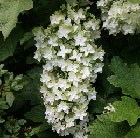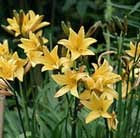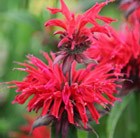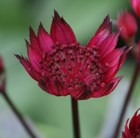New products at Crocus
by Sarah - April 1st, 2010.Filed under: Crocus, New Products.
New products added today at Crocus

oak-leaved hydrangea £14.99
Position: full sun or partial shadeSoil: moist, well-drained, moderately fertile, humus-rich soilRate of growth: average Flowering period: July to September Flower colour: whiteOther features: contact with the foliage may aggravate skin allergies; the flower-heads make excellent dried flower arrangementsHardiness: fully hardyArching clusters of long-lasting, double white flowers from July to September, pink-tinged with age, and deeply lobed, mid-green leaves. This deciduous, oak-leaved hydrangea is later-flowering than other varieties. With magnificent, bronze-purple autumn foliage, it makes an eye-catching specimen plant for a partly shady border with moist, well-drained soil.Garden care:Requires minimal pruning. Where necessary remove misplaced or diseased shoots in spring.

daylily £6.99
Position: full sun or partial shadeSoil: fertile, moist, well-drained soilRate of growth: averageFlowering period: JulyFlower colour: golden yellowOther features: strap like, dark green leavesHardiness: fully hardyMasses of beautiful golden yellow trumpets that are reddish-brown on the reverse and are borne on slender stems in July. This delightful daylily is perfect for the middle of a sunny mixed or herbaceous border. A popular and long flowering variety it copes well with a range of conditions including some partial shade. Garden care: Lift and divide large clumps in spring, applying a generous 5-7cm (2-3in) mulch of well-rotted garden compost or manure around the base of the plant. Water frequently from spring until the buds appear, and apply a balanced liquid fertiliser every 2-3 weeks

bergamot £6.99
Position: full sun or partial shadeSoil: fertile, moist, well-drained soilRate of growth: averageFlowering period: July to SeptemberHardiness: fully hardyBright red, long-lasting, tufted flowers are surrounded by a ruff of pale green bracts that have pink tips, which turn bronze shades after the flowers have faded. This new variety has an even more intense flower colour than ‘Cambridge Scarlet’, and is a vigorous grower that has better resistance to mildew than most. Perfect for adding late colour to a hot border, it will also work well in prairie style gardens when planted in association with ornamental grasses. The bees and butterflies will flock to it during the flowering period. Garden care: Most monardas can be capricious, and do not like soil that is either too damp or too dry. These plants are susceptible to powdery mildew, and while this rarely causes long-term damage, it can look unsightly towards the end of the summer. You can help reduce this by applying a 5-7cm (2-3in) mulch of well-rotted organic matter around each plant. Resist cutting bergamot back in autumn, since the stiff, vertical stems look good all winter.

masterwort £6.99
Position: full sun or partial shadeSoil: fertile, moist, preferably humus-rich soilRate of Growth: average to fastFlowering period: June to AugustHardiness: fully hardyThis is one of the darkest-flowered astrantias, with deep, ruby red pincushion-like flowers with a ruff of longer bracts than many other varieties. The leaves are pretty, too; deeply lobed and dark green. Although it is an old cottage-garden favourite, this astrantia works equally well in contemporary-style plantings. Use towards the front of a sunny, yet moist border, where the flower colour can be fully appreciated.Astrantias have been cultivated in Britain since the 16th century and have numerous common names, such as melancholy gentleman, Hattie’s pincushion and the more well-known masterwort.Garden care: Astrantias do not like to dry out. Incorporate plenty of organic matter when planting and water well in dry weather especially newly established plants. Lift and divide large clumps in early spring and apply a generous 5-7 cm mulch of well-rotted manure or garden compost around the plant. Divided specimens may take some time to establish since they don’t like having their roots disturbed.






